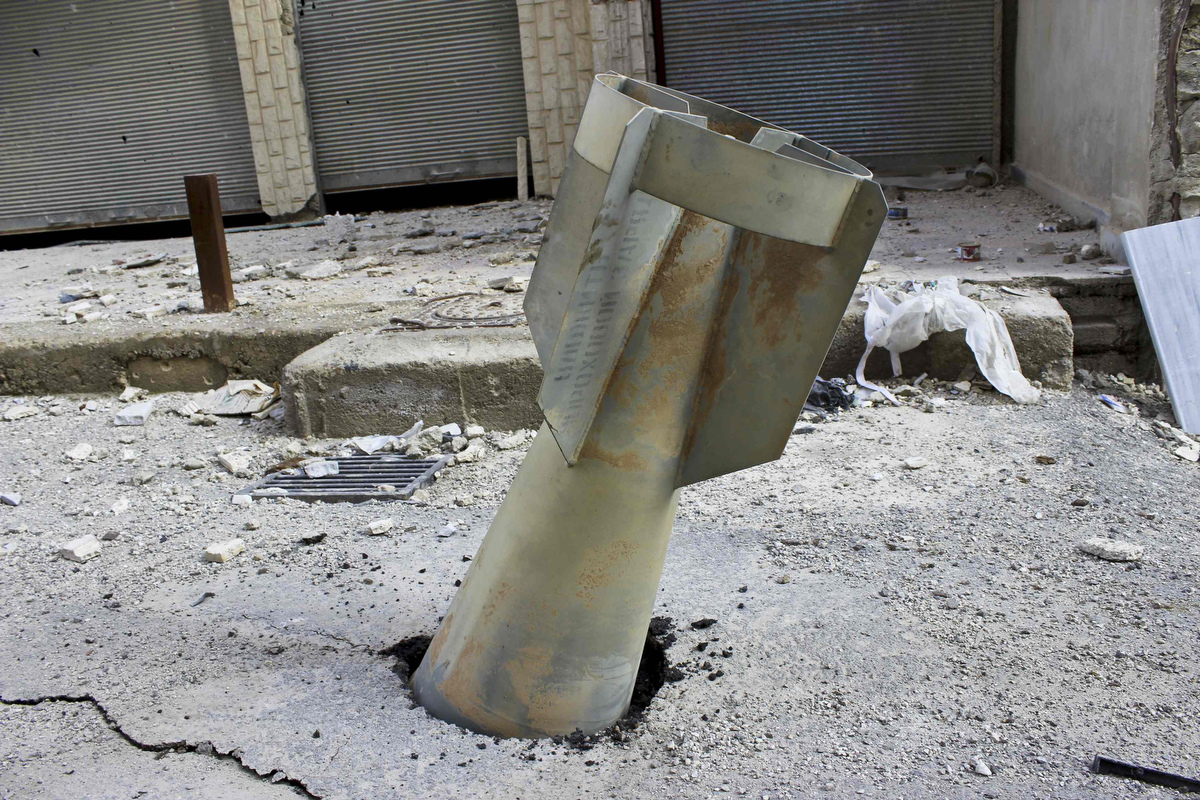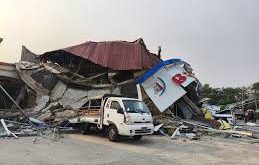KABUL: NATO troops leaving Afghanistan have left behind them a legacy of unexploded ordinance that is killing civilians at the rate of more than one a day, the majority of whom are children.
Since first invading Afghanistan in 2001, NATO air forces have dropped 20,000 tons of bombs on the country. About 10 percent do not detonate on contact with the ground and some malfunction, the Guardian reports.
Coalition soldiers have also set up firing ranges in dry riverbeds, fields and valleys, which are now scattered with unexploded shells and undetonated ammunition.
Helmand is one of the worst-affected provinces, as well as shells and bombs there are 91 known minefields covering an area of 63.8 square kilometers.
The UN-backed Mine Action Coordination Center of Afghanistan (MACCA) recorded 369 casualties, including 89 deaths last year among the civilian Afghan population because of unexploded ordinance. In some cases, de-mining sappers themselves have been targeted directly by insurgents.
It’s often children that bear the brunt of the mess coalition forces have left behind. Last fall, four siblings were collecting firewood near their home when shells that had been lying there unexploded went off in the children’s hands, killing two of them instantly and injuring their two brothers.
The area had been used by US soldiers for battlefield training, but the area had not been marked.
MACCA says that 75 percent of victims from unexploded ordinance (UXO) are children, because in Afghanistan it is children who do a lot of the basic tasks, which put them in danger, such as herding animals and collecting firewood and scrap metal.
The problem is compounded because most of the fighting in Afghanistan has taken place around residential areas. While diplomats from the US and the UK say that international law does not stipulate that countries clear battlefields, the director of MACCA, Mohammad Sediq Rashid, says it doesn’t absolve NATO of responsibility.
He said that scattering unexploded explosives around the country defeats the supposed object of the military intervention.
“It is a moral responsibility. Military intervention is the last resort, and it’s intended to protect people and stabilize the country,” Rashid told The Guardian.
Though there has been a reasonable amount of cooperation between NATO militaries and mine clearing agencies, there have also been complaints that in some cases US-led forces have withheld information about where UXO might lie.
“We ask for information about battlefields that may have UXO, but we have received coordinates for only 300 locations,” said Rashid. “It’s not enough.”
But after a peak in UXO accidents in 2013, and the subsequent critical media reports, Western governments have become more aware of the risks and are starting to cooperate more, according to Afghan officials.
The problem is compounded because many areas of Afghanistan are still in conflict, although of a less intense nature, and the deadline for clearing all NATO former firing ranges by the end of 2015 may be delayed.
In December 2014, insurgents killed 12 de-mining sappers in Helmand. Overall in 2014, 34 MACCA personnel were killed and 27 injured carrying out their work.
After 13 years of war, the US military and allies will leave thousands of square miles of unexploded grenades and other ordnance littered around Afghanistan. In recent years, most casualties from unattended explosives have been children, the UN found.
The United States and NATO forces have used 240 high-explosives ranges in Afghanistan since 2001, according to the Washington Post. One top range, for example, is 120 square miles, or about twice the size of Washington, DC.
The US will be responsible for cleaning 73 of those sites, which come out to around 800 square miles, US officials told the Post. This effort will cost about US$250 million. US officials say that each range has thousands of undetonated explosives.
Half of the total 240 ranges will be transferred to the Afghan army, and 40 belong to international coalition forces whose countries will be on the hook for cleanup.
In the meantime, casualties from these unmarked, randomly-scattered munitions will likely increase, as the US has only combed 3 percent of its domain in Afghanistan, officials said.
Since 2012, the United Nations’ Mine Action Coordination Center of Afghanistan has recorded 70 casualties around US or NATO firing ranges or bases, and the pace of explosions is increasing. Of these casualties, 88 percent were children. Victims were often taking animals to graze, gathering firewood, or searching for scrap metal.
Yet the Post reported that it found 14 casualties not included in the UN’s findings, indicating how difficult it is to track these incidents and how often they will occur as most foreign troops leave by the end of the year.
“We are anxious that the problem has arisen just as ISAF (International Security Assistance Force) is leaving,” said Abigail Hartley, director of the UN mine center. “It would have been much better to have had it addressed during the last eight years.”
Even if Congress approves funding to find and remove the ordnance, the task will be highly complicated without that troop presence. The US has shuttered around half of its 880 bases and facilities around the country already.
“There are less people to identify sites,” an anonymous US official told the Post. “And then if you decide you want to do the right thing and get them out there, how do you do it? Who protects them?”
A US military team was, in recent months, assigned to find which ranges exposed the most ordnance and which had caused the most casualties. Yet senior US officials have said little about the issue.
“It will take time and expense to complete this work, but it’s critical to the safety of the Afghan people and it is the right thing to do,” said Edward Thomas, a spokesman for Gen. Martin Dempsey, chairman of the Joint Chiefs of Staff.
Last year, 32,000 undetonated explosives were removed from a 60-square-mile area, the only spot cleared by the US thus far.
“Unfortunately, the thinking was: ‘We’re at war and we don’t have time for this,’” said Maj. Michael Fuller, the head of the US Army’s Mine Action Center at Bagram Airfield.
US officials pointed out to the Post that, since Afghanistan is not a signatory to the UN Convention on Certain Conventional Weapons, the US is not legally obligated to deal with the deadly ordnance they will leave behind.
In addition to US and ISAF explosives sprinkled throughout the country are 20 million pieces of ordnance left by the Soviet Union during its decade-long war and occupation in Afghanistan during the 1980s.
“We’re probably never going to be able to find [munitions], because who knows where they landed,” one US official told the Post.
Thus, Afghans will live with past wars for the foreseeable future. A report by the United Nations Assistance Mission for Afghanistan found that 2013 was the worst year for women and children.
Last year, 561 children were killed and 1,195 were wounded. Many were victims of roadside bombs or were caught in the crossfire of insurgent battles. US drone strikes are also responsible for an increasing amount of casualties. –(Agencies)
 Afghanistan Times
Afghanistan Times




